Guest post by Ọmọ́túndé Kàsálí
Exactly three months ago, in the afternoon of 1 July 2018, I set out from my home in Surulere, Lagos for a hotel in Sabon Gari, Kano. I was going on a one-week holiday to the prominent northern city to experience the North. Born and raised in Lagos, I did not see much of Nigeria beyond Lagos while growing up, except in my geography schoolbooks. However, these books interested me so greatly in the places and peoples of Nigeria, that from school on, I have always yearned to see the country in its vastness and diversity.
Much later, I made a concrete plan to fulfill this yearning – while bearing in mind my limited finances, my little free time, transport difficulties, security concerns, and my sparse countrywide connections. The plan was that I would visit a centre of the other major regions of the country beside the South-West, my home-region. And with time and luck, this plan began to materialize. I was posted to Imo State in the “South-East” for my Youth Service and lived in Owerri for the Year. During the time, I twice visited Port-Harcourt in the Niger Delta, just a 45-minutes’ drive from Owerri – first for a literary conference, and second on a visit to a relative.
Thereafter, my next region of interest was the Middle Belt and centre of interest in it Jos. Recently, having saved enough money for the trip and a holiday opportunity arisen, I finalized plans to visit Jos. I booked my flight ticket a month before my departure date, and got an accommodation offer from a friend, who is from Jos, maintains a residence there, but lives in Lagos. Then, sadly, a week to my scheduled departure, terror was visited on Plateau State, including Jos. On June 23 and 24, against the backdrop of the herders-farmers crisis, suspected herders gruesomely attacked 15 farming communities, leading to the deaths of 233 persons, the displacement of over 11,500 persons, and the desertion of over 40 villages.
Subsequently, a dusk-to-dawn curfew was imposed, extensive security measures announced, my trip to Jos deferred, and my holiday destination changed to Kano, which was the central city in my now-next region of interest, the North. Accordingly, I rerouted my flight ticket and booked a budget hotel. Sad thoughts about Jos would interrupt painfully, as I prepared for Kano.
At the Muritala Mohammed Airport, I boarded my Arik Air plane at past 7pm, and a little later, the flight – originally with a departure time of 3:05pm, which was then shockingly rescheduled three times on the very day of departure, and finally fixed at 6:45pm – eventually started for Kano at about 7:30pm.
I slept through the flight, and awoke around 9pm as we landed at Mallam Aminu Kano Airport. As I walked out of it, I noticed the glaring contrasts to its Lagos counterpart: serene halls, mellow lights, and no hassles. However, at its taxi park, I was taken aback by the ridiculously high flat-rate fare of ₦4,000 for a trip into the city – for a 15-minute drive to my hotel! The drivers justified it as an offset against high levies imposed on them by Federal authorities – which seemed plausible, given the general notoriety of Nigerian government institutions for exploitation. There was no Uber or Taxify in Kano, nor any other transport alternative in sight. Walking was not a sensible option, as it would entail an hour journey in the dark night of a strange city. Eventually, I bargained with a driver, and we agreed to a fare half the flat-rate.
On the journey into the city, the lights became brighter, the atmosphere more vibrant and my anticipation greater – which all climaxed as we pulled up before my hotel. The building was decorated with lights, there was music in the air, merrymaking all around, and a file of young women opposite the hotel. In it, I checked in and was led to my room, which I did not like but would get by with. Most light bulbs did not work, so did the little fridge, the TV was defective, so was a power socket, the music from the bar was too loud, water ran on and off in the toilet, and it was not potable. I had booked the room online, where it appeared a decent bargain, and now felt some regret about it. Nonetheless, I settled in, phoned my close friend, made a journal entry, and went to bed.
I slept in and got out of bed around 9am, and prepared for the day. Before setting out, I got some general information about Kano on Google, Wikipedia and TripAdvisor, and I had a phone conversation with a friend, who was born and grew up in Kano, and now lives in Lagos. She offered some tips on places to visit, things to do, and how to conduct oneself.
The first of my sights was the Gidan Dan Hausa (translated “Home of the son of the Hausas). It’s an over 250-year-old building, which became Kano’s first colonial residence in 1908, when Hanns Vischer, a British Educational Officer moved into it – his wife Isabella would join him in 1912. At the Gidan Dan Hausa, Vischer taught the English language and imparted western education to students drawn from 11 Northern provinces, including young princes of the Kano emirate. He was well-respected and -accepted, for his knowledge of Kanoan culture, his ability to speak Hausa, and his skilfulness at combining Islamic and western education – such that he was conferred the title of Dan Hausa (Son of the Hausas). He is said to have laid the foundation for modern education in the North.
Now a museum, the Gidan Dan Hausa presents a permanent exhibition of Vischer’s life in Kano, and the history of the city itself. I arrived its premises around noon and walked through a vast garden towards its ancient gates, where a notice forbade photographing. At the entrance, a guide described the historical building in rapid Hausa to a group of schoolchildren. I entered the building, paid the visit fee, and joined a tour group, which, as I later learned through introductions, comprised 3 Youth Corps members, and a student – Ahmad, whom I would later have more to do with. We were shown various articles of interest and informed on their importance for subjects including: the Vischers’ ways and works; Islamic and Western education in Kano; and Hausa-Fulani relationship, the Kano Emirate’s power, the culture of Kano, as well as their histories.
Having concluded my visit, I proceeded to my next planned sight, which was coincidentally Ahmad’s too: The Emir’s Palace. About 500 metres away, we set off for it together in conversation. Ahmad told me he was Fulani, from Abuja, studying in Zaria, on a visit at a relative’s in Kano, and had for a day been in Lagos. I replied in kind, and revealed that it was my first time in the North, which visibly interested him. He asked about my experience in Kano thus far – as I did his in Lagos when he visited – and offered further travel tips for the North. He then described it in its distinctness to the South, and we talked about this. He criticized the largely conservative outlook of the North, but admired the prominence of Northern culture in the North, especially the Hausa language – suggesting a contrast to the decline of Southern cultures and languages in the South. I sadly acknowledged it.
At the Emir’s Palace, we were denied entry, ostensibly for not having an appointment with the Emir, and advised to get permission at the opposite Emirate Council building – while locals entered freely into the Palace, apparently for any reasons but an appointment with the Emir. Likewise, at the Emirate Council, we were denied the permission, ostensibly for security reasons, and advised to visit the nearby Gidan Makama Museum – which was my next planned sight anyway – for an alternative experience of the Kano Emirate. Ahmad believed we were so treated because we were not traditionally dressed, but in T-shirts and jeans, and he further railed at the conservativeness of the North. He then took his leave of me for a personal errand, and I bade him goodbye and proceeded to the Gidan Makama.
Built in 1442 as the residence of the Makama of Kano – a high-ranking Emirate aristocrat, the Gidan Makama is an ancient beauty of Hausa architecture. Shortly after its erection, it served as the temporary palace of the Emir; and in 1903, following the British invasion of Kano, it served as the residence of the then-chief commissioner of the Northern Nigeria Frederick Lugard. Now a museum and a national monument, the Gidan Makama, in its 11 galleries, contains materials, artefacts and pictures representing the heritage of Kano.
At its gate, a man offered to be my guide at a small fee. For about 30 minutes, he led me through the museum, while he described its contents and their backgrounds: the colonial British capture of Kano, the traditional architecture of Kano, Islam in Kano, the Fulani Emirate dynasty, the ways of Kanoans, important historical and contemporary figures from Kano, the Durbar, the long history of commerce in Kano, and so on. Later, a large group of university students arrived on an excursion, and my guide excused himself to attend to them. I lingered in the museum, going over articles and taking pictures, and left shortly.
I lunched at the Kano Club to a World Cup match, and strolled by its lawn in the cool of late afternoon to tennis practices by adolescents. By evening, I was back in my hotel room, having visited almost half of my planned sights already on my first day-out in Kano.
So, the next day, I lingered in my hotel room, and set out late in the morning. My first destination was the Dala Hill. I had some difficulty finding a Keke, as tricycles were called, at the Keke-stop. I describe the stop as such, not as a bus-stop, for during my time in Kano, I found Kekes to be the dominant mode of public transport, and transit buses were a rare sight – in-fact, I came upon only one throughout my journeys. Hence, Keke-stops, not bus-stops.
Painted yellow, the Kekes were like a swarm of yellow ants crawling the streets of Kano. Though, compared to Lagos, Keke transport in Kano was better conducted: The rider’s seat sits only the rider; the left opening by the passengers’ seat is barricaded to prevent passengers from boarding from, or alighting onto, the side of traffic; and the business is free and private – no park rackets and destination restrictions.
So, at the Keke-stop, on my way to the Dala Hill, a rider finally agrees to take me, upon my indicating an image of it – so legendary was it. Rising over 500 metres, and covering around 10,000 m2, the Dala Hill is the mythical birthplace of Kano. The first settlers in the city are believed to have lived in the Hill. Reportedly, present-day Kano was known as Dala up to the 16th century. According to legend, Dala was a hunter and the eponymous founder of the Dala community and the great grandfather of Barbushe, the high priest to the ancient Hausa god, Tsumburbura. Not anymore a place of worship, the Dala Hill remains a vital natural heritage of Kano, supposedly under the protection of the Kano History and Culture Bureau – on paper only, as I would later see.
I found myself the only visitor that afternoon at the Dala Hill. I ascended it by the built concrete stairs, unshapely and unrailed, onto its wide flat top. Surrounding it well into the distance was the city of Kano. For a moment, I took in the spectacular landscape of the sprawling city; and for the next, the neglected features of the bare hilltop. A goat grazed,
and odd-looking acts went on in the crevices. Briefly, I photographed and filmed the city view, and descended the Hill into the local community, bringing my shortened 15-minutes visit to a quick end. I navigated the community, and later, hailed a Keke for the Ado Bayero Mall.
The mall, named after the Kano’s longest-serving Emir, sat set apart on its vast premises in the heart of the city. At the entrance, I submitted myself to security check and went in.
For some time, I wandered the mall, window-shopping, looking into gift stores for souvenirs, checking out the cinema, and enquiring about local dishes in the restaurants. I contemplated seeing a Hausa film about to show in the cinema, but decided against it, for my Hausa language skills entailed only a few words which I had learned in Hausa classes in school and seldom used until this trip. Instead, I settled into a restaurant which ironically, like the others, served no local dishes but fancy foreign foods. I ordered some Lebanese food and orange juice, and ate and relaxed to a World Cup match. Following the first-half, I returned to the hotel, ending my day-out.
The next day, the fourth day of my holiday week in the city, I took a break from sightseeing and did not to go out, for I was feeling tired from the outings, and had visited all but one of my planned sights anyway. Incidentally, late in the morning, an hour-long heavy windy rain fell, such as one would never expect in the famously hot North. Indeed, the sun had been scorching hot since I got here, as it would be when it appeared moments after the rain.
In any case, it was the rainy season and had been raining for days in Lagos before I left it.
Later in the afternoon, I went into the neighbourhood to search for a restaurant to lunch in. It was my first time walking Sabon Gari. Laid out into streets with names like Yorùbá Road, Ibo Road, Ibadan Street, and Aba Road, and with churches on quite a number of them, Sabon Gari is predominantly inhabited by Southerners. Translated “new town”, it has historically been set apart for non-Hausa-Fulanis, and, sadly, has been the site of past religious and ethnic clashes between Southerners and Northerners. I would later learn that Sabon Garis exist in several Northern cities, like Kaduna and Zaria, where however they have become of mixed habitation. I hope this one does one day.
I eventually find a decent restaurant. My order, amala with egusi, is taken in Yorùbá language, and served. And I proceeded to devour my lunch. I emerged from the restaurant, with a half-empty bottle of water, which I give to a street-kid who immediately approached me. During my time in the city, the sight of groups of street-kids was a highly disturbing and very common phenomenon.
My last sight was the Kurmi Market, which I visited first on my fifth day, and returned to on my sixth. The market was founded in 1463 by then-Emir Muhammad Rumfa as a regional centre for Trans-Saharan trade, now extends over 16 hectares, and is regarded as both one of the largest and one of the oldest markets in Africa. The Keke rider, who took me to it and with whom I conversed about it, informed me about its major commodities: textiles, artefacts, leather materials, traditional jewellery, etc. I told him I would like some textiles and jewellery as gifts, and he dropped me off in that area of the market. I walked down a narrow passage flanked by rows of cavernous stalls, which I surveyed, and whose keepers beckoned, as I passed. Ultimately, I buy, for myself and friends, a leather bag, bead necklace, and Sassauci caps – for more of which I returned the next day.
My seventh day in Kano, my last day, was departure day. Yet again, my Arik Air flight was delayed by two hours, and rescheduled to depart at 6:25pm. I made a mental note to avoid the airline in the future, as I left for the airport. I arrived in time, checked in, bought some Kilishi, and proceeded to the boarding area. Our plane arrived around 7:30pm, then quickly began boarding, and finally departed around 8:15pm, following some rain.
Mid-flight, I imagined our plane flying over Jos and thought about the possible events happening there then, after the previous week’s horror. I looked down from the window but saw plain darkness, and hoped for justice and peace for Jos, and looked forward still to visiting it in the future (sadly, there were recent reports of violence there). For a moment though, I reflected over the striking contrasts in two prominent cities of an incredibly complex Nigeria: death and destruction in Jos, and peace and liveliness in Kano. Today however, Nigeria’s national day, which also marks the one-year anniversary of my return to it after a few years away, I remain optimistic about the future of Nigeria despite its colossal challenges, and I am proud to be Nigerian.
_____
Omotunde Kasali (@OmotundeKasali) is a consulate official living in Lagos.
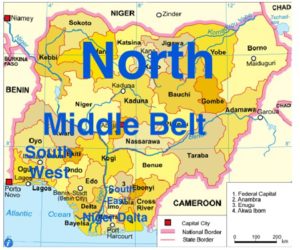
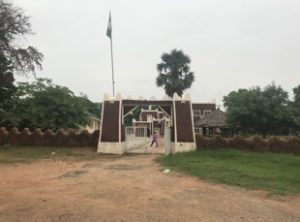

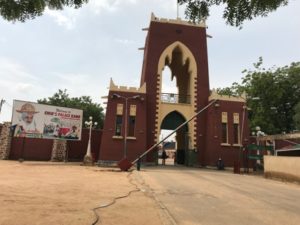
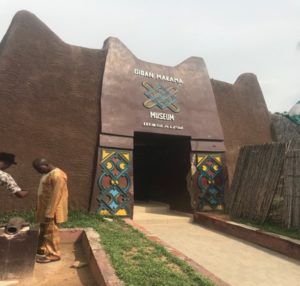

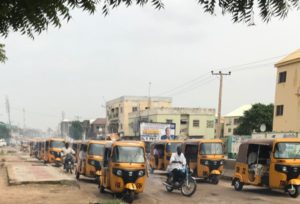
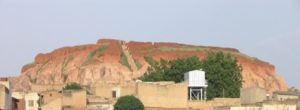

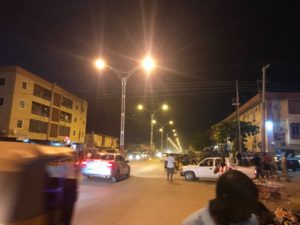
No Comments to Seeing Nigeria: 7 Days in Kano so far. (RSS Feeds for comments in this post)
No one has commented so far, be the first one to comment!